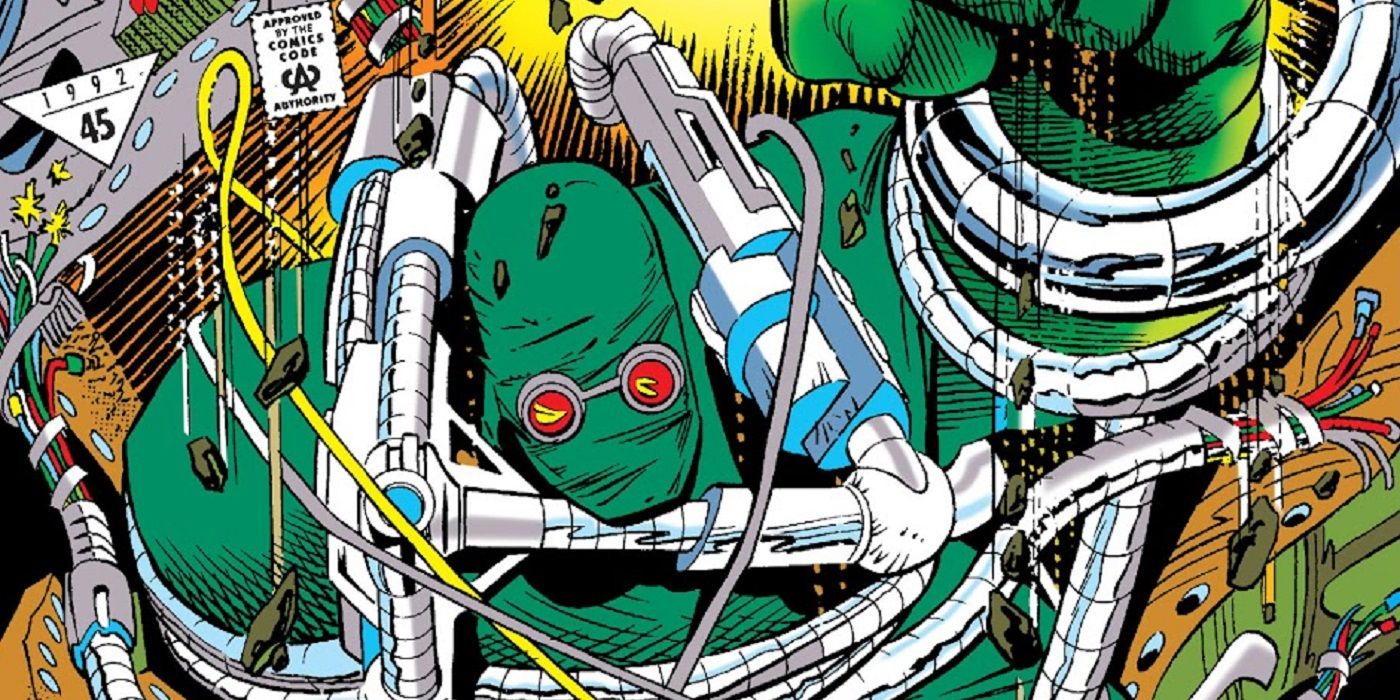
Doomsday First Smashed His Way to Infamy 30 Years Ago
Today, we head back 30 years ago, when Doomsday literally burst his way into the scene with his first appearances at the start of the Death of Superman arc
This is "Look Back," where every four weeks of a month, I will spotlight a single issue of a comic book that came out in the past and talk about that issue (often in terms of a larger scale, like the series overall, etc.). Each spotlight will be a look at a comic book from a different year that came out the same month X amount of years ago. The first spotlight of the month looks at a book that came out this month ten years ago. The second spotlight looks at a book that came out this month 25 years ago. The third spotlight looks at a book that came out this month 50 years ago. The fourth spotlight looks at a book that came out this month 75 years ago. The occasional fifth week (we look at weeks broadly, so if a month has either five Sundays or five Saturdays, it counts as having a fifth week) looks at books from 20/30/40/60/70/80 years ago.
CBR VIDEO OF THE DAY
This IS a fifth week month (and luckily so is next month), so I went with 30 years ago (most fifth week months, I think I tend to go to the 1990s) to Superman: The Man of Steel #18 (by Louise Simonson, Jon Bogdanove and Dennis Janke) for the first appearance of Doomsday (plus I'll show a little bit from the other October books that month).
HOW DID THOR PLAY INTO THE INTRODUCTION OF DOOMSDAY?
When Walter Simonson took over as the writer and artist of Thor with 1983's Thor #337, the first pages of his run showed some mysterious giant being working on as a blacksmith…

And each of the times that its hammer would come down on the anvil, while pounding the giant weapon into shape, the sound would be (designed by the brilliant John Workman) "Doom"…

Simonson would check in for a page or two each issue, and the "Doom" would continue…

Until finally the sword was finished, named "Twilight" and we see that it is Surtur and he is ready to lead his army against Asgard in Thor #346…

Well, Simonson's wife, Louise Simonson, was one of four regular writers on the Superman titles in 1992. You see, the Superman books did a sort of joint-story approach, where Simonson, Roger Stern, Dan Jurgens and Jerry Ordway would all have their individual books with distinctive subplots, but they would also all continue an overall story from week to week (this still gave a lot of room for each writer to tell their own unique stories, they just had to do them all in one issue, there just wasn't room to do a two-parter in a single title of the four books). There was even a little triangle on the covers to tell you what order to read the books in.
In any event, whether it was actually due to Simonson's direct connection to the writing staff or not, but the Superman books all followed Walter Simonson's lead in the books released in September, where beginning with Superman: The Man of Steel #17, and then followed by Superman #73, Adventures of Superman #496 and Action Comics #683, they would each have a final page showing SOMEthing trying to punch its way though a wall…

and slowly but surely, the punch would start to cause damage to the wall…

until the wall began to cave…

and finally, at the end of Action Comics #683, the wall gives way…

This leads directly to the opening of October's Superman: The Man of Steel #18, where the creature breaks free entirely…

And here, the "Doom" from the Thor stories is specifically used…

And if we were unsure if this mysterious being was a bad guy or not, we see it quickly establish so by laughingly killing an innocent bird…

WHAT'S ONE OF THE ODDEST ASPECTS OF THE DEATH OF SUPERMAN STORY ARC?
One of the things that I always get a kick out of when I look back on the "Death of Superman" storyline is that, for much of the story, the writers kept up with their regular plots, just working Doomsday's march into things. Meanwhile, though, these issues were suddenly selling at MUCH higher rates than before, and the second printings also did very well, so suddenly, an explosion of new readers were treated to the adventures of Keith the orphan, who keeps looking for his lost mother in Metropolis' underground, which is populated by a mixture of genetic rejects from Project: Cadmus, as well as prisoners who escaped from Warworld when Superman and the heroes of Earth repelled a Warworld invasion earlier in the year.

There are hundreds of thousands of readers who probably recognize this minor supporting character from the "Triangle" era of the Superman books just because of this opening issue of the "Death of Superman" arc. That just amuses the heck out of me.
HOW DID SUPERMAN'S KILLER, DOOMSDAY, GAIN HIS NAME?
This was at a weird period in time when Superman had become a member of the Justice League, which was still GENERALLY the lineup of the more comedic take on the League by Keith Giffen and J.M. DeMatteis, but the new writer of the series, Dan Jurgens (who also did art breakdowns for the book, with Rick Burchett doing finishes), spent a good deal of these issues sort of contrasting Superman with these comedic heroes, and it was a weird contrast.
Like in Justice League America #70, Superman is doing a talk show and his dignified approach is contrasted against the crassness of his teammates…

The creature then knocks down the League's ship, and quickly begins to tear them apart, beating Blue Beetle close to death…

Superman shows up when he hears the news, and see how Superman is kind of patronizing when he shows up? Booster Gold, meanwhile, remarks that they were facing "Doomsday" here…

and in the next part of the story, October's Superman #74 (by Jurgens as writer/breakdowns, Brett Breeding doing finished art), Superman adopts that name for the creature, now calling him Doomsday…

The Leaguers use all of their energy on Doomsday…

And in the process, Jurgens is able to basically write off Fire and Booster Gold from the team, with Fire's powers depleting and Booster Gold's suit running out of power. All to just basically burn off Doomsday's protective coverings, and that's it!

Adventures of Superman #497 and Action Comics #684 spent most of their time dealing directly with the Doomsday situation, but there are still some room for subplots, like Jimmy Olsen's briefly-lived kids show…

Since November is a fifth week month, we'll check in on the November Superman titles next month!
If you folks have any suggestions for November (or any other later months) 2012, 1997, 1972 and 1947 comic books for me to spotlight, drop me a line at [email protected]! Here is the guide, though, for the cover dates of books so that you can make suggestions for books that actually came out in the correct month. Generally speaking, the traditional amount of time between the cover date and the release date of a comic book throughout most of comic history has been two months (it was three months at times, but not during the times we're discussing here). So the comic books will have a cover date that is two months ahead of the actual release date (so October for a book that came out in August). Obviously, it is easier to tell when a book from 10 years ago was released, since there was internet coverage of books back then.























![Keto Ozempic Gummies Reviews [Beware Exposed 2023] Watch Keto Ozempic ACV Gummies Side Effects? Keto Ozempic Gummies Reviews [Beware Exposed 2023] Watch Keto Ozempic ACV Gummies Side Effects?](https://i0.wp.com/images.mid-day.com/images/images/2023/jun/Keto-Gummies-1906_d.jpg?fit=300%2C300&ssl=1)






























